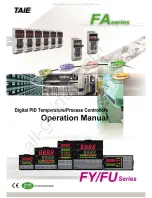
4. PREPARATION
4.1.
the battery charger will only charge free-electrolyte lead batteries having the following number of elements: 6 for 12-volt
batteries, 12 for 24-volt batteries.
4.2.
Before charging, check the state of the battery.
4.2.1.
remove the caps or the special fasteners of the battery.
4.2.2.
make sure the electrolyte level covers the battery plates; otherwise add distilled water until they are covered by 5/10 mm.
4.2.3.
the exact state of the battery can only be determined with a densimeter which measures the specific density of the
electrolyte. battery charge conditions can be checked according to the following solute density values (Kg/l at 20°c):
1.28 battery charged - 1.21 battery half-charged - 1.15 battery flat.
4.3.
Proceed with charging, by carrying out the following steps and in the same order:
4.3.1.
before charging, make sure the power supply lead is not plugged into the mains supply.
4.3.2.
set the charger voltage 12v or 24v according to the nominal voltage of the battery being charged, by moving the red cable
to the appropiate terminal. * note: to charge several batteries at the same time see the series/parallel diagram in fig. 2
4.3.3.
connect the output wire with red clamp to the positive terminal (+) of the battery
4.3.4.
connect the other output wire with black clamp to the negative terminal (-) of the battery, or in case of direct charge,
connect it directly to the vehicle’s chassis at a good distance from the battery or from the fuel pipe.
control
Panel
4.4.
Charging the Battery
4.4.1. Position the current adjustment diverters according to the capacity of battery to charge:
fig.2
fig.3
Original Language Version
© Jack sealey limited
suPerstArt300.v5,400.v2,500. | issue (1) 05/07/16
fig.4
fig1A






















